IGN Australia story: ‘Why Did L.A. Noire Take Seven Years To Make?’, June 2011
A feature story for IGN Australia. Excerpt below.
Why Did L.A. Noire Take Seven Years to Make?
Examining the troubled development of Team Bondi’s opus.
by Andrew McMillen
Team Bondi’s film noir-inspired detective thriller L.A. Noire was released last month to critical and commercial success. Set in a lavish recreation of 1947 Los Angeles, the game eschewed a familiar open-world design for case-by-case detective gameplay that revolved around examining crime scenes and interrogating suspects. Featuring a vast city, cases that adjusted depending on the player’s actions and choices, and sophisticated motion capture technology that had never been used in a video game before, it was a mammoth project.
So mammoth, in fact, that it took over seven years to complete, with a publisher switch – from Sony to Rockstar – midway through. That’s not the whole story, however. The development of L.A. Noire was anything but smooth.
Much has been written about the long development cycles on games such as Duke Nukem Forever, Too Human, or Prey, but the story behind L.A. Noire’s rocky road to release stands out within Australia’s small, tightly-knit development community. Team Bondi’s crime drama is not just the biggest game development project ever undertaken in Australia, it also served as the first-ever project for many of the creative forces behind L.A. Noire. It’s perhaps the combination of all these factors that has resulted in surprisingly open testimonials from former Team Bondi members about their experience working on the game.
Recently, a group of former Team Bondi employees launched a public website with an amended staff roll for L.A. Noire that includes 100 developers omitted from the official game credits. But the look behind the curtain started much earlier. On January 23 2010, an anonymous source on Twitter began leaking stories heard through the grapevine regarding the Sydney-based studio. The account wasn’t run by an ex-employee; it was anonymously dishing the dirt on Bondi as heard through unnamed sources, Wikileaks-style.
The tweets alleged that studio founder Brendan McNamara had mismanaged Team Bondi and development of L.A. Noire, and had spent “tens of millions” on proprietary technology in just a year. Despite then-publisher Sony Computer Entertainment America’s faith in McNamara based on his PS2 hit The Getaway, Sony dropped the project in 2005, when the studio “had far exceeded SCEA’s expected price tag for the game.”
According to the tweets, this situation “threw the studio into disarray. Strangely, McNamara quickly found hospice in his former rivals–the Houser brothers–and L.A. Noire was picked up by Rockstar [Games] in spring 2006… Since then, the game has been revamped, ported, and delayed four times. Rockstar spent more [than] Sony in their efforts to make it not suck.”
Locally, when the tweets were reported by the Australian gaming industry hub Tsumea, several anonymous commenters stepped in to back up the reports: “I can certainly attest to the appalling working conditions, the angry and abusive boss and the ineffective leads who were completely unwilling to do anything to protect their team members,” wrote one. “It’s abhorrent that these young kids are being thrown into a 24/7 corpse grinder with perpetual crunch and weekend overtime,” wrote another.
The comments on Tsumea recall events that took place in 2004, when an anonymous LiveJournal post by a user named ‘EA_spouse‘ expressed frustration at the fact that she rarely saw her fiancé, an employee of Electronic Arts, due to the long hours he was forced to work while attempting to meet deadlines for the title The Lord of the Rings: The Battle For Middle-Earth. The blog received wide press attention and eventually led to three class action lawsuits against EA for unpaid overtime.
After the initial tweets and short-lived online discussions that followed, the situation returned to all-quiet-on-the-Bondi-front. In the meantime, there was finally light at the end of the tunnel: L.A. Noire’s worldwide release date had been set for mid-May 2011. The game would finally see the light of day, but many questions remained. Are the allegations true? Why did it take seven years to bring L.A. Noire to market?
IGN Australia reached out to dozens of former Team Bondi employees to help get a deeper look and tell the story. Eleven agreed to speak on the record, under the condition of anonymity; many feared reprisal from current and future employers if they were to be tagged as whistleblowers. The combined experience of these former staff is extensive: between them, they represent 24 years of service. Their individual tenures range from a few months, to four years, and they include artists, programmers, animators, and software engineers. We also spoke extensively with Team Bondi studio head Brendan McNamara for his perspective.
For the full story, visit IGN Australia.
This story runs to 4,500 words. It’s the biggest story of my career thus far, in terms of length, readership, and impact. As is hopefully apparent, a lot of work went into this story.
I first pitched it to my editor at IGN on February 14, 2011. My initial email, entitled ‘Story pitch: What was it like to work on L.A. Noire?‘, is below.
Hi mate,
Just catching up on some industry news via Tsumea and elsewhere. Am loving the allegations by (seemingly) dozens of anonymous ex-Team Bondi employees about the horrible working conditions behind L.A. Noire.
Favourite comment? “It’s abhorrent that these young kids are being thrown into a 24/7 corpse grinder with their perpetual crunch and weekend overtime.”
I’d like to investigate these allegations and find out how much truth there is to it. Like my Krome story, could be the case of ex-employees agreeing to speak anonymously. As long as we can verify that they were employed by the company and they know what they’re talking about, we should be good to go. Right?
Interested?
Andrew
It wasn’t until I got the nod from my editor and began reaching out to former Team Bondi employees that I realised the Tsumea story was published in 2010, not this year. Those allegations had existed for over a year, and no-one had checked them out. Curious.
As mentioned in the story, I contacted dozens of former Bondi employees. Some were silent; some told me to leave the story alone, as they didn’t want their former colleagues to suffer in the event of the allegations being found to be true. Over the months, I rounded up eleven ex-Bondi workers who were happy to speak to me, anonymously, about their experiences working for the studio.
Rockstar Games found out quite early on that I was investigating this story – via an overzealous source contacting an existing Rockstar employee, I think. They weren’t particularly happy. In an attempt to ensure balanced coverage, they eventually offered me access to Team Bondi CEO Brendan McNamara – though speaking with him was necessary if the story was ever going to be published, as it would be rather slanderous to publish the ex-employees’ comments without juxtaposing them against the responses of their former boss. Yet, as picked up by many of those who commented on IGN and the article’s resultant media coverage, McNamara did little to deny what I’d been told by his former staff.
With a gestation time of over four months, this is by far the longest amount of time I’ve spent pursuing a single story. It was worth it, though, because I feel that it’s a story that needed to be told. I hope you agree.
A final note: I’m interested in pursuing this story – and stories like it – on an ongoing basis. If you’d like to share your experience of working for Team Bondi and/or Rockstar Games, you can email me here.

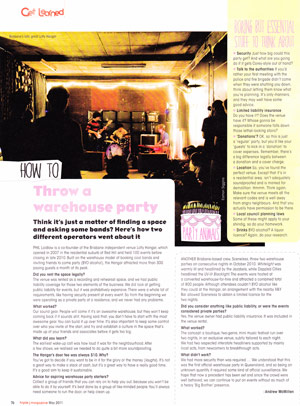
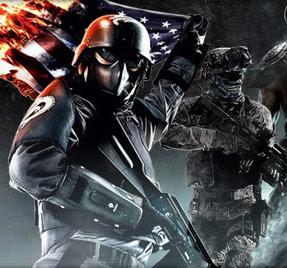
 Reggie Watts: Unscripted, but well prepared
Reggie Watts: Unscripted, but well prepared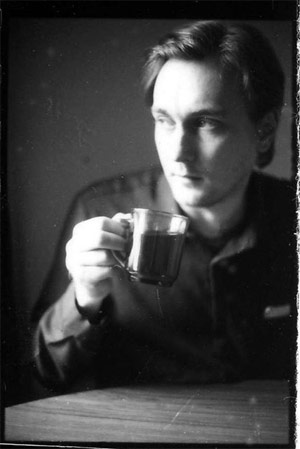 A ‘Storytellers’ article for Mess+Noise. Excerpt below.
A ‘Storytellers’ article for Mess+Noise. Excerpt below.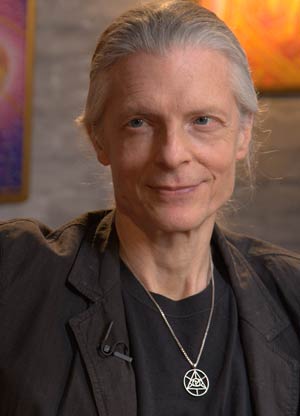 In early January 2011, I was scheduled to interview the American visionary artist
In early January 2011, I was scheduled to interview the American visionary artist 
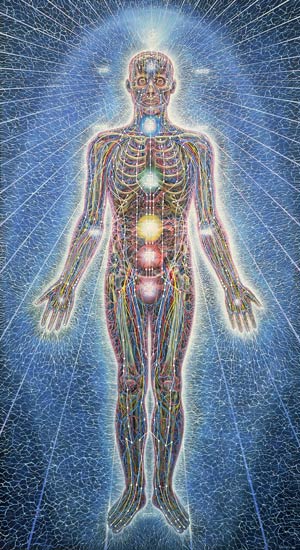 Your larger pieces are often reduced in size to appear in various media – books, calendars, postcards, and on the web. Do you find this dismaying at all? Is anything lost in the art, when it’s reduced from the original size?
Your larger pieces are often reduced in size to appear in various media – books, calendars, postcards, and on the web. Do you find this dismaying at all? Is anything lost in the art, when it’s reduced from the original size?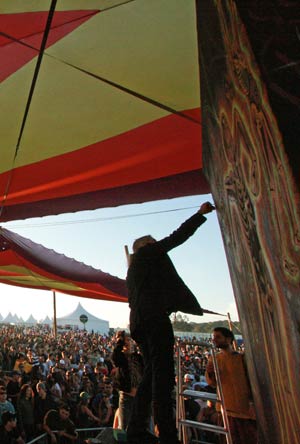
 What is your proudest artistic achievement?
What is your proudest artistic achievement?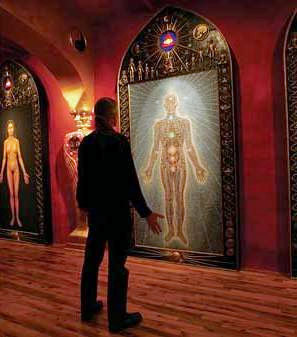 Unless I’m mistaken, you seem to both now thrive on the notion of patronage – you’re financially supported by your fans and followers, who pay you to express yourselves through art. Was this always the goal?
Unless I’m mistaken, you seem to both now thrive on the notion of patronage – you’re financially supported by your fans and followers, who pay you to express yourselves through art. Was this always the goal?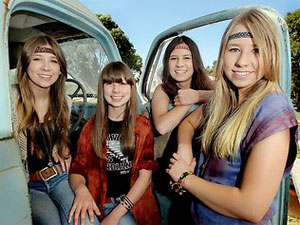

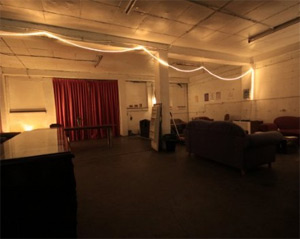 From the beginning, $10 got you inside – a cost which was maintained through until the final show in December 2010, except for the occasional special event – and since it was classed as a private residence, there was no liquor licensing regulations involved. You’d bring your own booze, and since the main area was adorned with couches, it didn’t feel dissimilar from your living room. Such was the charm of the Hangar: interesting people and new sounds, experienced in comfort. Upon entering, you’d be almost guaranteed to have a great – and cheap – night out.
From the beginning, $10 got you inside – a cost which was maintained through until the final show in December 2010, except for the occasional special event – and since it was classed as a private residence, there was no liquor licensing regulations involved. You’d bring your own booze, and since the main area was adorned with couches, it didn’t feel dissimilar from your living room. Such was the charm of the Hangar: interesting people and new sounds, experienced in comfort. Upon entering, you’d be almost guaranteed to have a great – and cheap – night out.